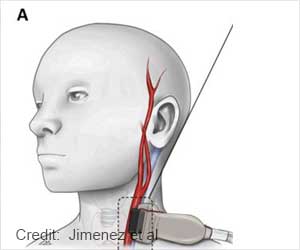Triple-pill strategy is cost-effective for patients with mild-to-moderate hypertension compared to usual care.

These are the conclusions of a new paper entitled “Fixed-combination, low-dose, triple-pill antihypertensive medication versus usual care in patients with mild-to-moderate hypertension in Sri Lanka: a within-trial and modelled economic evaluation of the “Triple Pill versus Usual Care Management for Patients with Mild-to-Moderate Hypertension (TRIUMPH) trial”” published in Lancet Global Health recently. The economic evaluation was carried out by researchers from the George Institute for Global Health.
Though the TRIUMPH trial took place in Sri Lanka, it has implications for all low and middle-income countries including India, as elevated blood pressure incurs major public health and economic burden. “Achieving appropriate blood pressure control is challenging because of therapeutic inertia, which might arise because the treating physician has assumed that the patient’s blood pressure has decreased sufficiently, guessed that existing treatment has yet to reach its full effect, or because of concerns of adverse effects. Treatment gaps have contributed to the consequent high costs of hypertension-related hospital care,” says Dr. Abdul Salam, Senior Research Fellow, The George Institute and one of the authors of the paper.
Initial or early use of fixed, low-dose, the triple combination of blood pressure-lowering drugs (early triple pill strategy) is seen as a promising strategy for reducing the burden of uncontrolled hypertension because of its proven efficacy and safety as well as its potential ability to reduce therapeutic inertia and improve adherence to medication. Several clinical guidelines currently recommend the use of dual combination therapy for initiation of treatment; however, currently, triple therapy is only recommended for individuals not controlled by dual therapy.
This first-ever economic evaluation of early triple pill strategy was based on the TRIUMPH trial that was published in JAMA last year which showed that early triple pill strategy (of amlodipine, telmisartan, and chlorthalidone) compared to usual care improved BP control significantly. “The economic evaluation assessed the cost-effectiveness of triple-pill strategy by undertaking a within-trial (6-month) and modeled (10-year) economic evaluation of the TRIUMPH trial, using the health system perspective,” says Dr. Salam. Health-care costs were determined from trial records and published literature. A discrete-time simulation model was developed, extrapolating trial findings of reduced systolic blood pressure to 10-year health-care costs, cardiovascular disease events, and mortality.
The early triple-pill strategy, compared with usual care, costs an additional US$9 per person in the within-trial analysis and $347·75 per person in the modeled analysis. Incremental cost-effectiveness ratios were estimated at $7·93 per participant, reaching blood pressure targets at six months and $2842·79 per DALY averted over a 10-year period.
“Our findings are important because they demonstrate the cost-effectiveness of triple pill strategy relative to usual care for mild-to-moderate hypertension. In limited-resource settings like Sri Lanka, and other such low and middle-income countries, where there are large and increasing gaps in treatment for cardiovascular conditions, the study provides a strong economic case for scaling up this intervention as a means of addressing the population burden of cardiovascular disease,” says Dr. Salam.Source-Medindia














